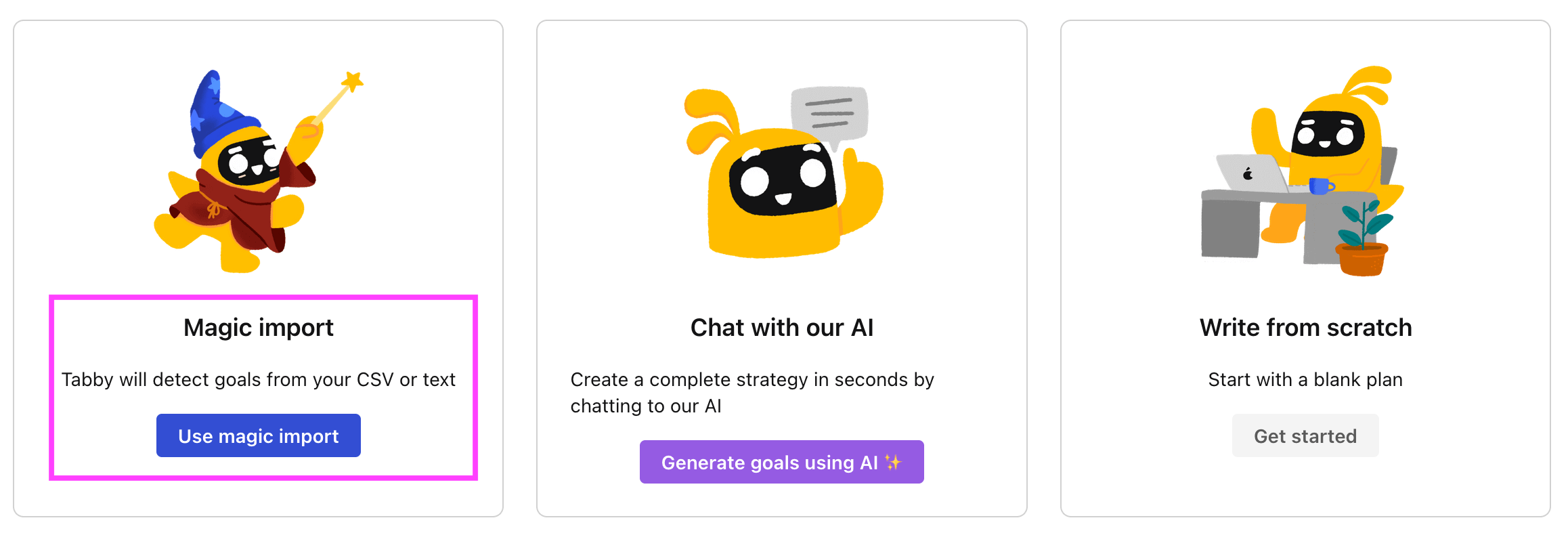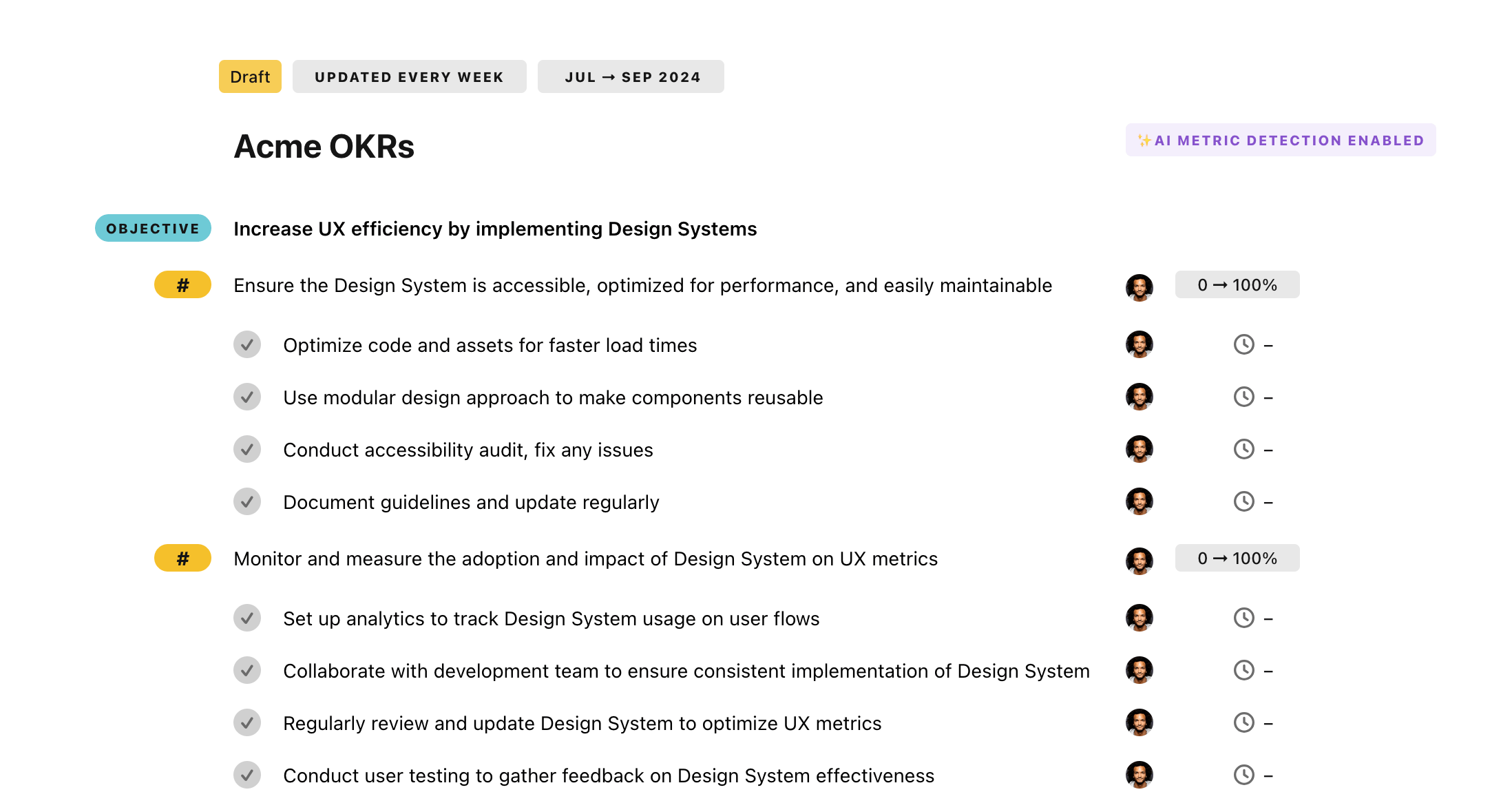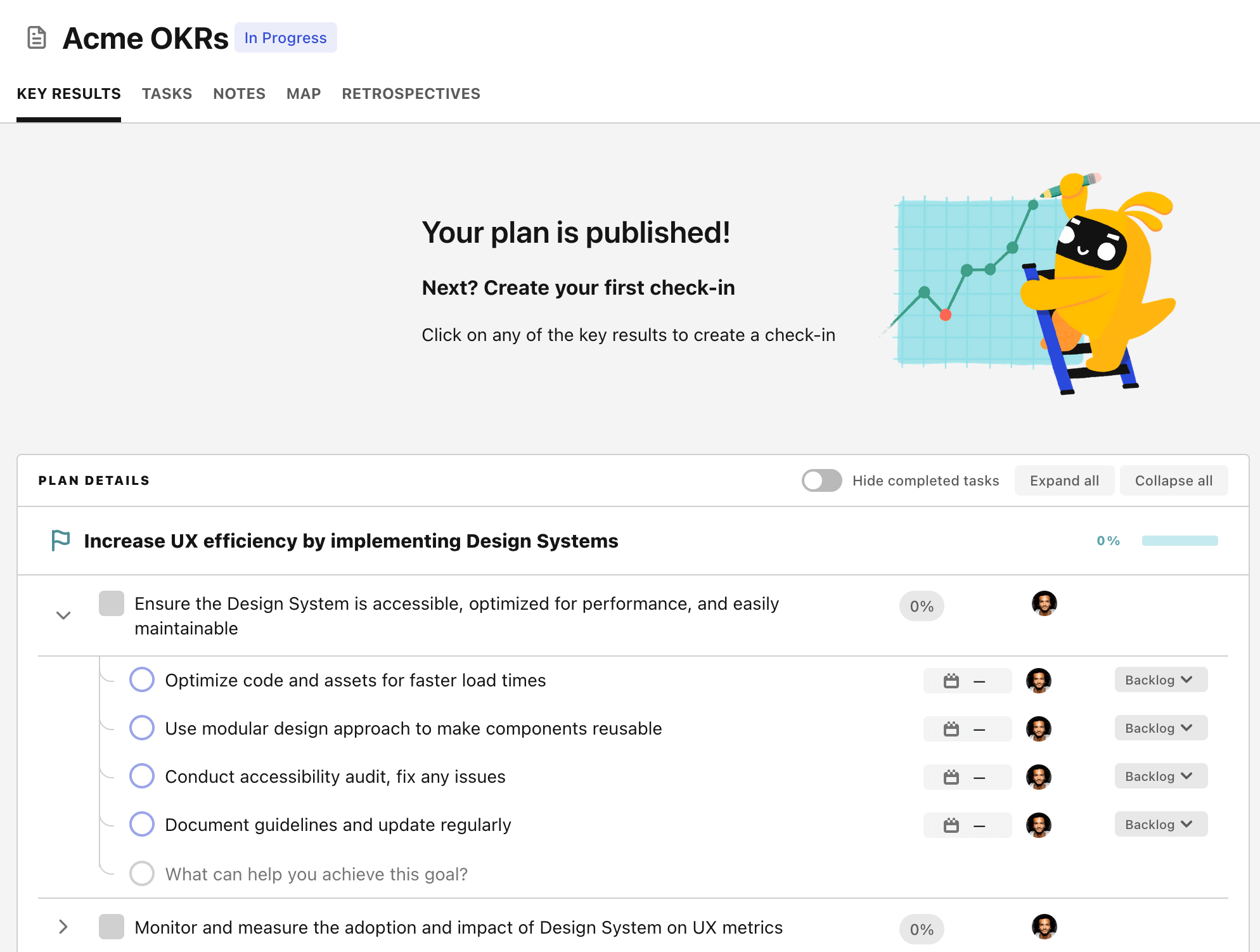OKR template to successfully implement proposed program module
Your OKR template
A vital objective within this OKR also includes the finalization of the module's blueprint and the full requirement analysis, ensuring all stakeholders' needs are taken into account. This will involve extensive stakeholder engagement in requirement gathering and a thorough needs analysis.
A crucial component of the OKR is the finalization of the coding and testing phase with less than 10% bug incidence. This involves the use of automated testing tools, rigorous testing during the development stage, and multi-level code reviews to ensure the highest level of quality.
Accomplishing these objectives will ensure the seamless integration of the program module, enhance user experience, and realize the full benefits of the new offering. It will also effectively cater to stakeholders' needs and maintain high-quality standards in coding and testing.
ObjectiveSuccessfully implement proposed program module
KRDeliver a well-documented, user-friendly program module for smooth integration and usage
Perform user testing to ensure user-friendliness
Ensure smooth integration with existing software
Develop extensive, clear documentation for the program module
KRFinalize program module's blueprint and requirement analysis by covering all stakeholders' needs
Develop and finalize module's blueprint
Identify and engage all stakeholders for requirement gathering
Conduct requirement and need analysis
KRAchieve 100% completion of coding and testing phase with less than 10% bugs incidence
Leverage automated testing tools for precise bug detection
Implement rigorous testing measures during development
Conduct multi-level code reviews for quality assurance
How to edit and track OKRs with Tability
You'll probably want to edit the examples in this post, and Tability is the perfect tool for it.
Tability is an AI-powered platform that helps teams set better goals, monitor execution, and get help to achieve their objectives faster.
With Tability you can:
- Use AI to draft a complete set of OKRs in seconds
- Connect your OKRs and team goals to your project
- Automate reporting with integrations and built-in dashboard
Instead of having to copy the content of the OKR examples in a doc or spreadsheet, you can use Tability’s magic importer to start using any of the examples in this page.
The import process can be done in seconds, allowing you to edit OKRs directly in a platform that knows how to manage and track goals.
Step 1. Sign up for a free Tability account
Go tohttps://tability.app/signup and create your account (it's free!)
Step 2. Create a plan
Follow the steps after your onboarding to create your first plan, you should get to a page that looks like the picture below.

Step 3. Use the magic importer
Click on Use magic import to open up the Magic Import modal.
Now, go back to the OKR examples, and click on Copy on the example that you’d like to use.

Paste the content in the text import section. Don’t worry about the formatting, Tability’s AI will be able to parse it!

Now, just click on Import from text and let the magic happen.

Once your example is in the plan editor, you will be able to:
- Edit the objectives, key results, and tasks
- Click on the target 0 → 100% to set better target
- Use the tips and the AI to refine your goals
Step 4. Publish your plan
Once you’re done editing, you can publish your plan to switch to the goal-tracking mode.

From there you will have access to all the features that will help you and your team save hours with OKR reporting.
- 10+ built-in dashboards to visualise progress on your goals
- Weekly reminders, data connectors, and smart notifications
- 9 views to map OKRs to strategic projects
- Strategy map to align teams at scale